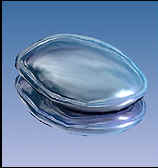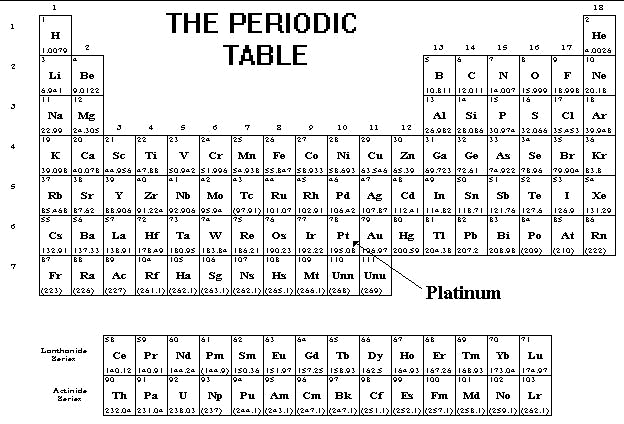|
Menu
|
Platinum |
||
Key Data
Description
Platinum jewellery Platinum, when pure, is a beautiful silvery-white metal and is malleable and ductile. It has a expansion coefficient almost equal to that of soda-lime-silica glass and is therefore used to make sealed electrodes in glass systems. Isolation The metal occurs in ores mixed with other metals such as palladium and gold and its extraction is complex. Preliminary treatment of the ore or base metal byproduct with aqua regia (a mixture of hydrochloric acid, HCl, and nitric acid, HNO3), gives a solution containing complexes of gold and palladium as well as H2PtCl6. The gold is removed from this solution as a precipitate by treatment with iron chloride, FeCl2. The platinum is them precipitated as impure (NH4)2PtCl6 on treatment with NH4Cl, leaving H2PdCl4 in solution. The (NH4)2PtCl6 is burned leaving an impure platinum sponge. This can be purified by redissolving in aqua regia, and removal of rhodium and iridium impurities by treatment of the solution with sodium bromate, and them precipitation of pure (NH4)2PtCl6 by treatment with ammonium hydroxide, NH4OH. This yields platinum metal by burning. |

